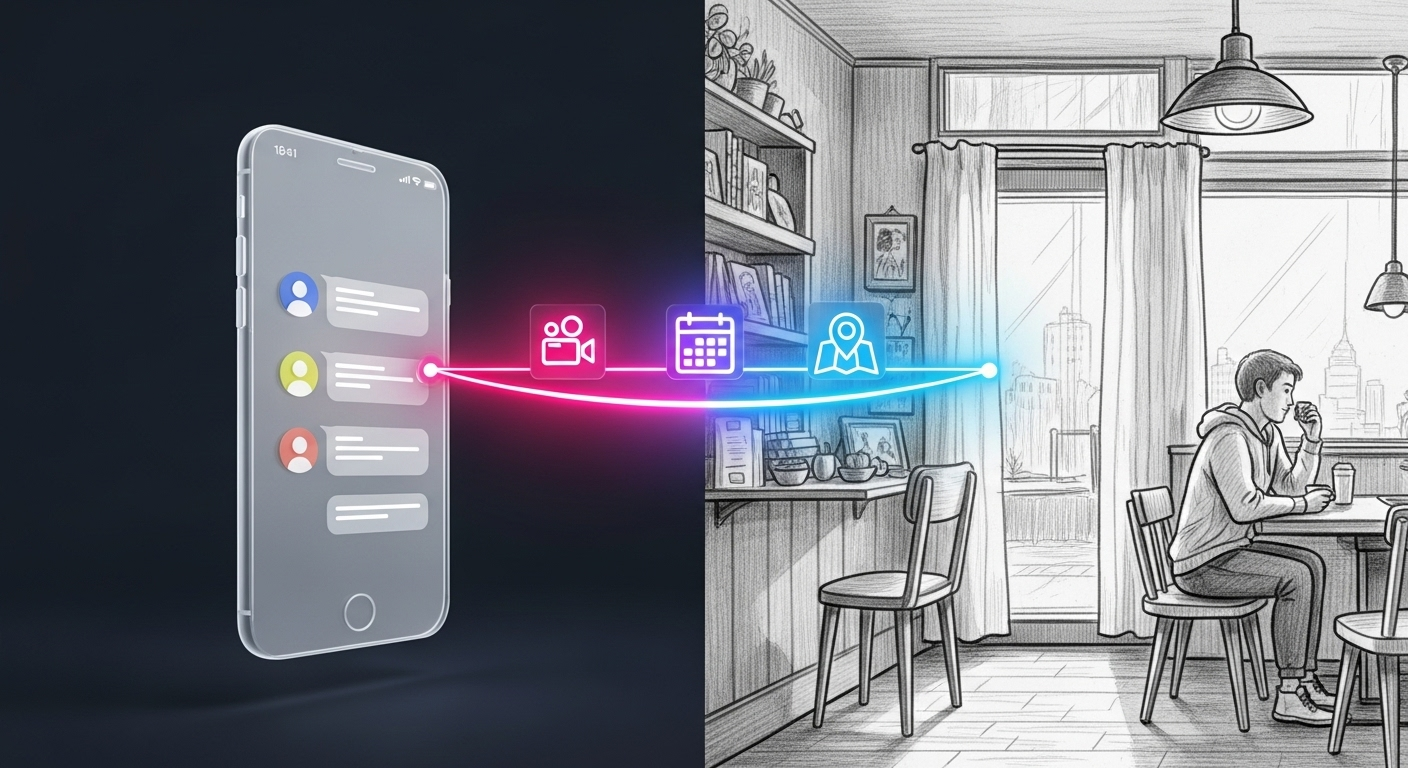In the arena of modern social platforms, the initial digital exchange—the messaging, the sharing of profiles—is merely the preliminary bout. The true main event, the moment that determines a real victory, is the transition from online chatter to an offline, real-world meeting. This critical step is where potential is tested and genuine connection is forged, but it is also fraught with hesitation and uncertainty for users.
For platforms engineered for success, orchestrating this transition is a calculated science, a game plan designed to minimize friction and maximize the chances of a successful encounter. They act as a cornerman, providing the tools and strategy needed to move a promising connection from the screen to the street with confidence. These systems are meticulously designed to bridge the digital divide, turning promising online chemistry into tangible offline experiences.
The entire strategy, however, is predicated on having a vibrant local scene from the outset. Before any meetings can be planned, a platform must master the art of attracting local contenders, creating a dense and active community within a specific geography. This article outlines the strategic framework that successful platforms use to guide users from the initial match to the first handshake or conversation. We will explore the tools, safety protocols, and event-driven features that form a winning game plan.
The Pre-Fight Verification
Before two contenders step into the ring for a real-world meeting, a crucial verification phase must occur to build trust and manage expectations. Top-tier platforms understand that blind faith is a poor strategy and instead provide tools that act as a digital handshake. The most powerful of these is the integrated video chat, which serves as a vital pre-flight check before committing to an in-person meeting.
This feature allows users to verify identity, gauge chemistry, and establish a baseline of comfort in a controlled, low-stakes environment. It effectively weeds out catfishing and confirms that the rapport built over text translates into a genuine conversational flow. By encouraging a brief video call, platforms are building user confidence and dramatically increasing the quality and safety of subsequent offline interactions.
Beyond video, a robust profile verification system adds another layer of security and authenticity to the process. This can involve confirming social media accounts, phone numbers, or even using simple photo-matching technology to ensure a user is who they claim to be. This due diligence isn’t about being intrusive; it’s about establishing a trusted environment where users feel secure enough to take the next step.
Staging the Main Event
Once trust is established, the platform’s role shifts from verifier to event planner, actively facilitating the move offline. Instead of leaving users with the awkward “so, your place or mine?” dilemma, leading apps provide structured and creative solutions. They offer a curated playbook of first-meet ideas designed to be safe, public, and conducive to conversation.
This proactive approach removes the logistical burden and anxiety from the users, allowing them to focus on the connection itself. The platform can suggest low-pressure activities based on shared interests discovered by the algorithm, transforming the first meeting into an exciting shared experience. This turns the app into an indispensable social concierge service, not just a simple introduction tool.
The most effective platforms integrate features that help organize these encounters, from suggesting ideal public locations to coordinating schedules. The goal is to create a seamless transition from app to real life by offering a variety of strategic options, such as:
- Low-key group events hosted by the platform at partner venues like cafes or bars.
- Suggested “activity dates,” like a trip to a mini-golf course or a museum, based on mutual hobbies.
- Partnerships with local businesses to offer curated date-night packages at a discount.
The Rules of Engagement
A successful game plan for offline meetings is built upon a foundation of safety, with clear rules of engagement that protect the community. Platforms have a responsibility to not only connect people but also to educate them on how to navigate the first meeting safely. This involves providing a readily accessible set of safety guidelines and best practices directly within the app.
These guidelines often include common-sense advice like meeting in a public place, informing a friend of your plans, and arranging your own transportation. By actively promoting these rules, the platform normalizes cautious behavior and empowers users to prioritize their well-being. This proactive stance on safety is a critical component of a trustworthy and sustainable social ecosystem.
Moreover, the platform must have a swift and decisive response system for when things go wrong. This includes an easy-to-use, non-confrontational reporting feature that allows users to flag inappropriate behavior or safety concerns after a meeting. A clear and transparent policy on how such reports are handled is essential for maintaining the integrity of the ring and ensuring all contenders feel protected.
Post-Fight Analysis
The final round of a successful offline transition strategy is the feedback loop that occurs after the meeting. The platform’s job isn’t over once two people have met; in fact, this is where some of the most valuable data can be gathered. A confidential feedback mechanism allows users to report on the quality of the match and the meeting itself.
This post-fight analysis serves a dual purpose: it helps the algorithm learn and refine its future suggestions, and it provides a clear signal about the quality of users on the platform. If a user consistently receives negative feedback for their offline behavior, the platform can take appropriate action, improving the experience for everyone. This creates a valuable feedback loop that rewards good conduct and penalizes bad actors.
This data can also be used to suggest the next steps, such as prompting for a second date if the feedback is mutually positive. By closing the loop, the platform demonstrates that it is invested in the entire journey of the connection, not just the initial introduction. It’s a final, strategic touch that reinforces the platform’s role as a dedicated partner in the user’s social life.
Questions and Answers
Group events in public, partnered venues are a brilliant strategy for lowering the barrier to entry for first meetings. They are safer, less intense than a one-on-one date, and remove the pressure of having to carry a conversation alone. It allows users to meet multiple people in a relaxed social setting, making the transition from online to offline feel more natural and less like a formal interview.
Offline feedback is the ultimate ground truth for a matching algorithm. It confirms whether the digital chemistry translated into real-world compatibility. If users who the algorithm predicted would be highly compatible report a negative experience, the model can analyze their profiles to understand what it missed, allowing it to adjust its parameters and make more accurate predictions in the future.
While a combination of features is ideal, integrated video chat is arguably the most effective single tool. It’s the perfect intermediate step between texting and a full-blown meeting, offering a high level of verification and chemistry testing with a very low commitment of time and energy. A successful five-minute video call can provide more confidence to meet in person than days of texting.

